THE SURGE Review
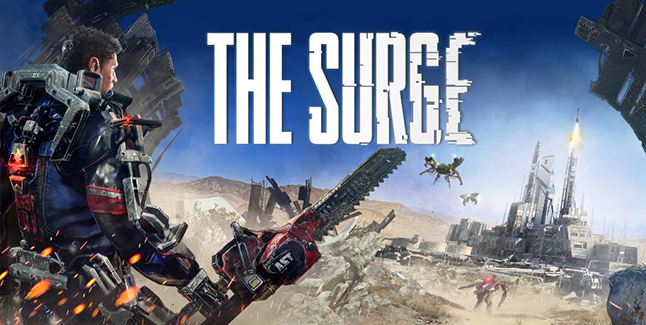
When DARK SOULS burst onto the scene six years ago, it was an instant classic, heralding an emergent new genre in the process. (Okay, 2009’s DEMON’S SOULS should really be getting the credit, but I think even the most diehard FromSoft fan has given up that fight years ago.) Though the Sisyphean cycle of ultra-punishing swordfights atop an ever growing mountain of the player’s corpses proved to be a wildly popular concept, other developers were slow to jump onto the bandwagon. It’s only been in this past year (which coincidentally saw the conclusion of the Dark Souls franchise) that games like LET IT DIE, NIOH, and NIER: AUTOMATA have begun to duplicate FromSoft’s success in earnest.
Latest to the party is THE SURGE, which, ignoring a slew of 2D attempts on the Souls formula, is conspicuously the only Western take on the genre. This isn’t developer Deck13 Interactive’s first rodeo: 2014 saw them attempt the same game with early Souls clone LORDS OF THE FALLEN. LORDS received middling reviews, as while it was a fine game by its own merits, it failed to capture DARK SOULS’ brutal difficulty and unforgiving melee system. Many eyebrows (mine included) were raised when it was announced that Deck13’s spiritual follow up, THE SURGE, would again try to emulate FromSoft’s flagship series. Thankfully, THE SURGE quickly establishes itself as an homage that hits its mark far more gracefully than its predecessor.
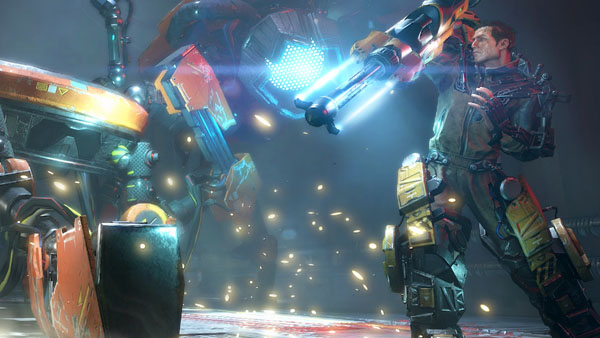
Well, as gracefully as a guy with a fluorescent bulb for an arm can manage
Our story picks up in the far future, where industrialization and pollution have all but drained Mother Earth of her life. Leading the effort to rejuvenate the planet is CREO, an aerospace corporation that launches legions of climate control satellites to reverse the environmental damage. Wheeling in for his first day at CREO’s sprawling launch complex is Warren, a quadriplegic drawn by the promise of being able to walk again, thanks to CREO’s strength enhancing exosuits. After choosing which flavor of rig he wants (they come in “strong-but-slow” and “fast-but-fragile” variants), Warren is put under for the requisite surgery. Except that he’s not, and he passes out as he watches automated surgeons ventilate him with drills. When Warren wakes up, he discovers that everyone in the facility is either dead or has been driven psychotic by the haywire machinery. With his newfound strength and a trusty metal pipe for defense, Warren ventures out to discover what happened to his new workplace.
On paper, THE SURGE reads like a list of basic essentials for an aspiring Souls-like. Waking up without explanation in a mysterious, treacherous world? Check. Labyrinthian environments teeming with enemies and treasure? Check. Collecting souls, err, scrap from fallen foes to level up your character, only to lose them all if killed? Check and check. The only part that’s missing is any form of online interaction. Yes, THE SURGE is certainly a by-the-numbers affair in many departments, but at least does so well and in a nascent genre where such safe design can still feel fresh. The maze that is CREO is a joy to explore, and it will take a while for Warren to discover each and every secret room, shortcut, and sound-byte that offers some hint as to how the facility fell into the state it’s in.
I say that playing THE SURGE is “a joy” because, while common logic would dictate that a good Souls-like is anything but “enjoyable,” THE SURGE manages to be user-friendly without becoming easy. Warren will still get murdered in a single hit, but the process of getting from his respawn point to his impending grave has been greatly streamlined. Items can’t be broken, accumulated scrap can be banked at safe points, and you can actually pause the game (!!!!). While it can be argued that some tension has been reduced by being allowed to go to the bathroom in the middle of a dungeon crawl, I’ll gladly take some real-life comfort over virtual peril any day of the week.
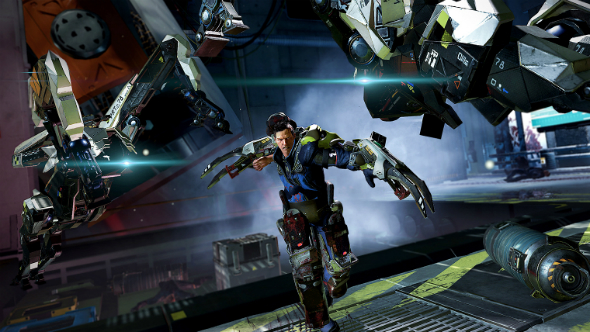
Running to the bathroom like
Of course, slapping a coat of sci-fi on top of the established swords and sorcery skeleton wouldn’t be enough to stand out from the growing swell of Souls-likes, so THE SURGE chooses to distinguish itself in its combat. Rather than traditional “light” and “heavy” attacks, THE SURGE divides its moveset into pressure-sensitive horizontal and vertical strikes; the former being ideal for fending off crowds of enemies, while the the latter is more geared towards focusing damage on specific weak points, such as human heads or robot tummies.
The precision of your attack matters, because the main method of obtaining new items in THE SURGE is by surgically removing them from your foes while they are still alive. Dealing enough damage to a specific body part will prompt Warren to dismember it, causing the target to drop their equipped gear (decapitating foes will yield helmets, chopping off their arms will cause them to drop their weapon, and so on). The tradeoff is that only armored limbs have a chance at generating loot when removed, and said armor greatly reduces the strength of your attacks. This system means that each enemy encounter becomes a conflict between resource management and basic survival as you prioritize which body parts to target, and because armor placement is randomized with each bad guy, you can’t reliably use the same strategy for every situation. It’s a surprisingly deep mechanic that keeps the player on their toes and only becomes more important as the game progresses.
Tactical considerations aside, beating down THE SURGE’s denizens is an undeniable pleasure. Whether you pick heavy or fast playstyles, Warren fights with a satisfying amount of weight and responsiveness. If nothing else, it’s the sheer absurdity of your arsenal that seals the deal. None of these “weapons” were designed to be used for combat, but neither are they practical enough to be used in a work environment. You’ve got chainsaws attached to sword hilts and “forklifts” that amount to three-foot-long steel blades protruding from your forearms. THE SURGE’s setting is willfully ridiculous to the point of bordering DEAD RISING levels of insanity, and it’s all the better for it. Clipping off a cyborg’s torso with industrial grade tin snips or punting a robot off a catwalk with an oversized hammer never fails to amuse.
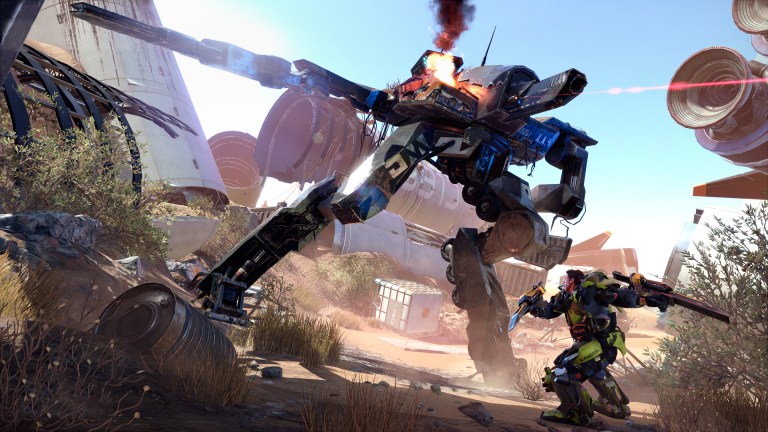
It’s not quite as amusing when this guy stomps you to death for the 20th time
If there’s a weak link in THE SURGE, it’s the characters. While CREO is bafflingly gorgeous for what amounts to a giant factory, ites denizens get old fast. The overwhelming majority of the regular enemies you fight are regular humans in one configuration or another of your own exosuit, and while that doesn’t make them necessarily dull to fight, they aren’t a whole lotta fun to look at. While the bosses are as varied as they are brutal, there are only five (5!) of them in the whole game, and I’m pretty sure there were dungeons in BLOODBORNE with more than that. Rounding off the list of offenders is Warren himself. I’m not sure why THE SURGE doesn’t feature custom characters, because Warren is already as blank of a slate as you can get. Warren’s attempts at wit during conversations with fellow survivors come off as lame in only the most unintentional of ways, and the wheelchair-bound opening, while making for a cool reveal, is never expanded upon and makes up the entirety of his paper-thin backstory.
To be fair, bland characters are par for the course in a genre where most player avatars are mute suits of medieval armor, and THE SURGE is a tale driven far more by the journey than the destination. Despite the lackluster cast, THE SURGE still provides one hell of a world and plenty of toys to play around with inside of it. Deck13 has proven that the second time’s the charm, and while THE SURGE won’t be reinventing the genre, it at least helps pave a solid foundation for future Souls-likes to come.
Verdict: Recommend

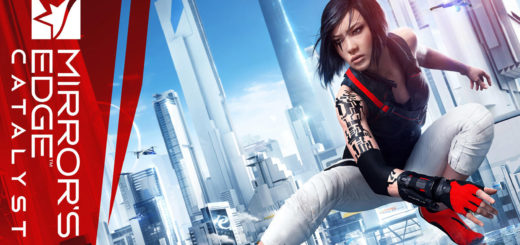
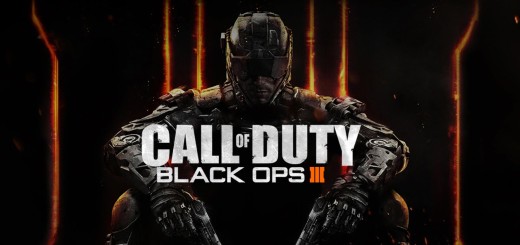

The is surge is like Sci-Fi version of Dark Souls. (https://youtu.be/J4mOyYvFo2A)
-MGGamelab
http://bit.ly/MG_SUBS